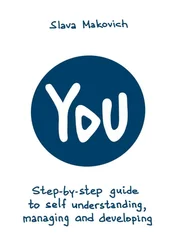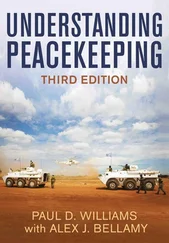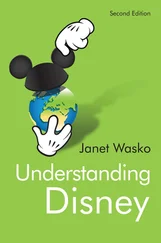VERDICT
Bogaert successfully introduces asexuality as another sexual orientation that demands further research. He likewise demonstrates the importance of asexuality not only in its own right as an understudied subject but also in how it contrasts with other sexual orientations. (His chapter on art and food, showing how sex permeates human culture, is a good example of this.) Recommended for readers interested in human sexuality.
(Library Journal)
Essential reading for anyone who wants to explore how asexuality is transforming our understanding of sex.
(David Jay, founder of Asexual Visibility and Education Network (AVEN))
Despite an adaptationist flavor, Understanding Asexuality is a thoughtful, nuanced, and even paradigm-changing book.
(Maurine Neiman, Ph.D., assistant professor, Department of Biology, University of Iowa)
Published by Rowman & Littlefield Publishers, Inc.
A wholly owned subsidiary of The Rowman & Littlefield Publishing Group, Inc.
4501 Forbes Boulevard, Suite 200, Lanham, Maryland 20706
www.rowman.com
10 Thornbury Road, Plymouth PL6 7PP, United Kingdom
Copyright © 2012 by Rowman & Littlefield Publishers, Inc.
All rights reserved. No part of this book may be reproduced in any form or by any electronic or mechanical means, including information storage and retrieval systems, without written permission from the publisher, except by a reviewer who may quote passages in a review.
British Library Cataloguing in Publication Information Available
Library of Congress Cataloging-in-Publication Data
Bogaert, Anthony F., 1963–
Understanding asexuality / Anthony F. Bogaert.
p. cm.
ISBN 978-1-4422-0099-9 (cloth : alk. paper) — ISBN 978-1-4422-0101-9 (electronic)
1. Sex. 2. Gender identity. I. Title.
HQ21.B754 2012
305.8—dc23
2012009164
 The paper used in this publication meets the minimum requirements of American National Standard for Information Sciences Permanence of Paper for Printed Library Materials, ANSI/NISO Z39.48-1992.
The paper used in this publication meets the minimum requirements of American National Standard for Information Sciences Permanence of Paper for Printed Library Materials, ANSI/NISO Z39.48-1992.
Printed in the United States of America
I know that I am being an ageist to suggest that youth is synonymous with physical beauty. Well, to all you middle-aged people like me who think I am being ageist, all I have to say is this: Act your age! Attractiveness can be construed as the amount of draw or attention we can pull from others, and I think there are two age-sensitive, attention-getting components of attractiveness/beauty. First, there is a childlike “cuteness” component, which draws attention from others and is important because of its role in attaining the attention/care that children receive from competent others, such as parents. Thus, children have beauty in the form of “cuteness” that adults find appealing, because children need to draw adult attention to themselves in order to be cared for. As such, adults who retain some of this cuteness (e.g., boyish charm) can still draw their share of attention from others. The second youth-based component of beauty is related to fertility and reproductive vigor. Adolescents and adults need to draw the attention of others to reproduce, so it is not surprising that body and face features we find appealing are often cues to these characteristics. Furthermore, most people’s fertility and reproductive vigor (particularly that of women) peak in their twenties. So, alas, beauty is heavily youth based! We will discuss beauty and attractiveness in this book, as they also relate, obviously, to both sexuality and asexuality.
I thank the eminent sexologist, William Fisher, who introduced me to the articles by Rubin and Byrne, and who I believe mentioned some of these examples in one or more of his human sexuality lectures, which I attended as a graduate student.
An interesting exception was pointed out to me when I was visiting a crocodile farm in Northern Territory, Australia. The caretakers noted a rare case of a male and female crocodile that seemed to have developed an affinity for one another and, unlike all the other animals there, preferred to be caged together. They also slept on top of one another like love-obsessed newlyweds. Surprised that love would emerge in such an unnatural context, it made me wonder, a bit tongue in cheek, whether human love is partly a function of being in captivity.
For someone to be considered asexual, I think the lack of sexual attraction should have endured over a long period of time. For example, in my original study, a person was defined as asexual if he or she never had sexual attraction to others. Thus, like a heterosexual or homosexual orientation, which implies enduring level of attraction to others, there should be some level of persistence to one’s lack of sexual attractions if one has an asexual orientation.
By the way, I call this “the drunk test.” Armchair psychologists can use it to assess the deep-seated attractions, sexual and otherwise, of their friends, family, and acquaintances.
This is not to deny that there are times when we may not be able to know about a person’s true inclinations and desires, because he or she may lie (or may not know) about them. Thus, if the behavior is “observable” in some way (e.g., getting caught with a prostitute), this may provide more accurate information than what people “report” on their attractions and desires. But this does not mean that if we had a faithful window into their minds, their attractions would be a worse indicator of who they are (as a sexual being) than their behaviors. Indeed, it would not. So, I reiterate: An accurate assessment of a person’s attractions always trumps an accurate assessment of his or her behavior when it comes to understanding the true nature of that person’s inclinations.
A recent exception to this is a study by Poston and Baumle (2010), which defined asexuality in a number of ways, including a lack of sexual behavior.
Indeed, sexual fantasies are so closely linked to one’s sexual attractions that Storms’s model of sexual orientation is sometimes referred to as the 2D fantasy model of sexual orientation (Storms, 1980).
I am using testosterone here as an example, but I don’t want to imply that this hormone is the only factor at work. There are a number of factors other than testosterone—including psychosocial ones, for example—that influence sex drive.
That having been said, more research needs to be done on desire issues in asexual people. One issue that needs to be clarified is what asexual people mean by “no sexual desire” and “no sexual attraction,” along with how they discriminate between these two aspects of sexuality. Most sexologists would likely indicate that desire refers to sex drive and interest, while sexual attraction refers to one’s sexual inclination toward others. Most sexologists would also likely assert that there is a fair degree of overlap in what these two aspects capture about sexual expression for most people (Bogaert, 2006b). However, some (perhaps many) laypeople may use the terms “desire” and “attraction” differently than most sexologists do. For example, some people who identify as asexual may prefer to describe their asexuality as an issue of low/no desire, because they are more familiar with the word “desire,” rather than “attraction,” within the context of sexuality, and prefer the word “attraction” to describe romantic and affectionate orientations (and not necessarily a “sexual” inclination or orientation). Thus, these asexual people may have felt little “sexual” attraction for a partner of a particular gender (in the traditional sexual orientation sense), but still have strong romantic and affectionate attraction for these partners (see, for example, work by Lisa Diamond, 2003b). Consequently, they still describe their “attraction” for partners of a certain gender because of their romantic feelings/inclinations toward them. Note: A similar point was made earlier in the chapter on romantic versus sexual attractions.
Читать дальше

 The paper used in this publication meets the minimum requirements of American National Standard for Information Sciences Permanence of Paper for Printed Library Materials, ANSI/NISO Z39.48-1992.
The paper used in this publication meets the minimum requirements of American National Standard for Information Sciences Permanence of Paper for Printed Library Materials, ANSI/NISO Z39.48-1992.










